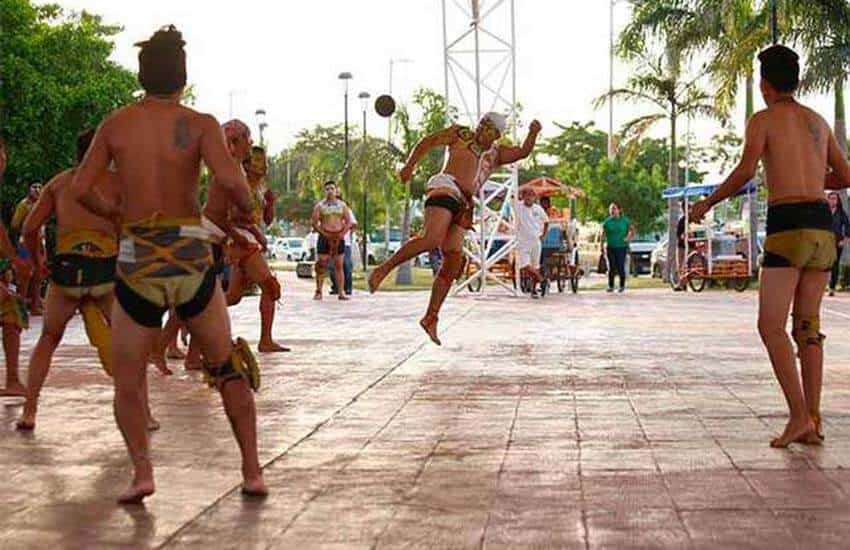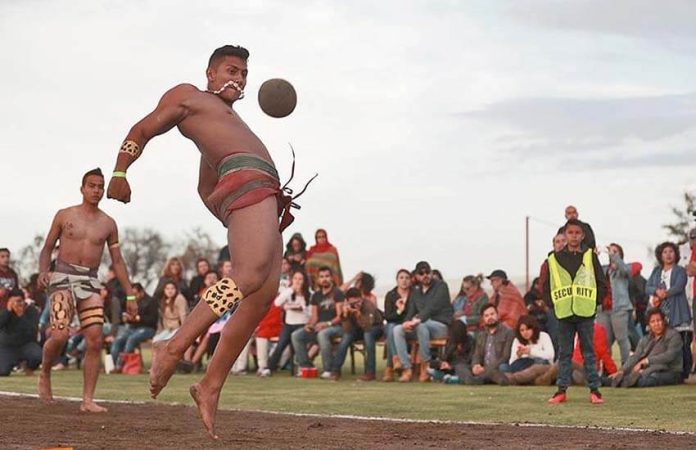On Saturday, the first Southeast Mexican Cup of the ancient Mesoamerican game of pelota maya will take place in the Yucatán community of Umán, 18 kilometers southeast of Mérida. It is a celebration of one of the world’s oldest sports.
This tournament will host teams from Yucatán, Campeche, Chiapas and Quintana Roo. As well as being a tournament in its own right, this event will also act as a precursor to the World Cup championship on December 2–5 in Mérida, determining which players will progress to that final competition.
That December contest will see teams from Belize, El Salvador, Honduras, Panama and the host, Mexico, compete. Three World Cups have already been held for the ancestral sport: in Chichén Itzá in 2015, in Guatemala in 2017 and in El Salvador in 2019.
Qualifying rounds for the international tournament have already been held in San Juan La Laguna, Guatemala, which saw the winning team, Ajpopab Tzutujil, earn their ticket to the final in Mexico.
Ancient Maya civilizations in countries all over what is now Latin America, and all over Mexico, played a version of this ballgame — as did the Mexica. Perhaps the best-known surviving game court is located at the Mayan ruins of Chichén Itzá in Yucatán. In recent years, the game has been revived as a modern sport in Mexico and several Latin American countries.

Pelota maya — which is just one term for the game among the different groups in different countries that play it — has become an increasingly important part of sporting culture for the indigenous people of the Mesoamerican region. Although the idea of watching a modern ballgame rarely draws to mind implications of power and politics, there are social and cultural implications inherent in the playing of many sports, none more so than the oft-forgotten Mesoamerican ballgame.
In Umán, for example, the municipal government established a free school in 2019 for Maya youth to learn the game of their culture. “We are betting on the new generations practicing this sport that our ancestors left as a legacy,” municipal official José Manuel Ruiz Garrido told the newspaper El Financiero soon after the school’s opening.
The revival of this most ancient of ballgames represents the rescuing of a silenced tradition and a link between the Maya of today and the world of the past.
This is not a game for the fainthearted. Though the losers are no longer killed as sacrifices to the gods, bruises are ubiquitous — as can only be expected after continually flinging your body onto the ground in pursuit of a three-kilogram rubber ball.
The specifics of the game as it was played in ancient Mesoamerican societies remain largely unknown, and the precise mechanics are likely to have varied across cultures and eras. The game as it is played today, therefore, is based on passed-down culture and the suppositions of researchers who have attempted to divine the rules and symbolism of the game from architectural remains.
In the modern-day version, the heavy rubber ball is pushed with the hip in an attempt to displace the other team from their court, until the ball crosses the end line. It is played by both men and women, as it would have been by the ancient Maya.

Ultimately, though, the details of how the game is played are at best only equal to the cultural importance of the sheer fact of its revival. As a game, pelota maya is a demonstration of dexterity, strength and strategic mastery, but more than this it is a sport that speaks to the history of an entire society.
The game was undoubtedly played for a variety of reasons and had a multitude of meanings to different Maya peoples; it is believed to have stood in for acts of warfare, to have functioned as a ritualistic religious ceremony and to simply be a good way to pass the time.
The elements of the game, too, are laden with overlapping symbolism. The game is central to the epic Popol Vuh, the Maya story of creation, in which two pairs of brothers enter the underworld and play the ballgame against the gods there.
The first pair of twins, the First Fathers, lose the game and are sacrificed. The second pair, the Hero Twins, overcome the underworld gods and outwit them at every turn. The story ends with the apotheosis of the First Fathers to the heavens, where they become the sun and the moon and bring about the beginning of the cycle of fertility and harvest that nourishes the rest of civilization.
The ballcourt thus becomes emblematic of the transition between the cycles of life and death, a liminal space between the underworld and the earth.
To this day, the motivations behind the playing of the game remain complex: it is a legacy to leave to the future, and it is an honoring of a culture that has historically been quashed by Western Christian society. During the Spanish invasion of the region, conquistadors systematically erased the game by destroying the ball courts, only some of which now remain.
In recent years, groups from across Mesoamerica have been salvaging this essential piece of Mayan society from the annals and breathing life into it once more; many hope that it will spread across the region and gain in popularity to rival sports such as soccer and baseball.
Pulling the first team sport ever played into the modern Mesoamerican consciousness, this month’s tournament, as well as the international cup in December, are an opportunity for the indigenous people of Mexico to become living witnesses to the past. Through them, it is hoped that the vein of shared sportsmanship that once ran through the Mesoamerican civilizations can be reinvigorated and given new lifeblood.
Shannon Collins is an environment correspondent at Ninth Wave Global, an environmental organization and think tank. She writes from Campeche.
